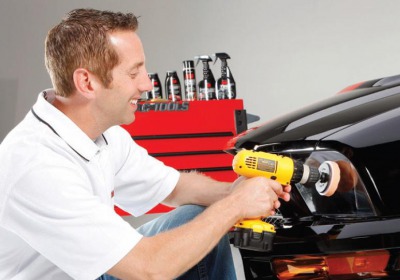Seeing and being seen are keys to winter-driving safety
Tue, 24 Nov 2009It's that time of the year when we here at AutoWeek feel duty-bound to give you a primer on winter-driving safety. We are compelled to tell you to steer in the direction of the skid, to stock emergency supplies in your trunk, to make sure your car is shod with the proper rubber to get you through the season.
But winter brings more than snow, ice and cold. It also brings darkness, more hours of it than the rest of the year, at both ends of the commuting day. You might not think about that as an aspect of winter-driving safety, but it certainly is.
For example, with the clocks rolled back to standard time, kids head to school while it's still dark, and morning commuters--sleepy and stressed--need to make sure they can see and be seen by the little ones and also by other drivers, not to mention the proverbial deer.
The Motor Vehicle Lighting Council says that limited visibility--such as what drivers face in the dark, snowy winter--is a factor in about 2.8 million accidents, 23,000 fatal crashes and 2,300 pedestrian deaths per year in the United States.
What helps improve visibility? That's easy: clean and clear windshields and windows, effective wiper blades and, of course, properly functioning lights, especially headlights.
We say "of course," but headlights don't seem to get enough attention. In fact, the Automotive Aftermarket Industry Association Car Care Council found that 26 percent of cars it inspected had issues with their lighting.
This is a special interest of Sam Memmolo, cohost of the Speed channel's Two Guys Garage and radio show Sam's Garage. He has just come off a 24-city media tour promoting October as National Headlight Safety Month in partnership with 3M.
Memmolo--who, besides his TV and radio credentials, also is an ASE master auto technician with more than 45 years of experience--knows who AutoWeek's readers are. "Your readers are car enthusiasts," said Memmolo. "They've got electronic stability control, traction control, antilock brakes--all technologies that have changed the dynamics of driving. Enthusiasts know they can shut the traction control off and enjoy the car differently. But they forget the little things." Such as headlights.
"You need to keep the lenses clear and remember that bulbs lose their intensity," Memmolo said.
These days, headlight lenses are made of polycarbonates--plastics--and are prone to hazing from road salt, ozone and UV rays. "Walk around a parking lot," said Memmolo, "and you'll see that 50 percent of cars have hazed headlights."
His rule of thumb: "If you look at the lens and can't see the bulb clearly, the bulb's not getting the light out onto the road." It's as if you've got lampshades on your headlights; the light they're giving off might seem bright, but it's diffuse.
"Also, it looks terrible!" Memmolo said. No enthusiast wants that.
There are solutions, of course. Some are expensive: You can replace the lenses, which cost from $75 all the way up to $1,500 per light, depending on the vehicle. Memmolo's choice is to polish them yourself, and the product he uses is 3M's Headlight Lens Restoration System. The kit costs less than $30, requires only your own drill and takes less than an hour to remove the deteriorated top layer, instead of just waxing the lens, in an easy process. (Clear step-by-step instructions are online at www.3mcarcare.com.)
"You can make them pretty close to new," Memmolo said.
It was fitting that Memmolo spoke to us from Las Vegas on the opening day of the SEMA show. He said the displays of new aftermarket goodies were "just tremendous," including lighting and safety-related products. As one example, Memmolo said that LED lights were coming of age, and he expects them to be used in headlights soon. Their advantages, he said, are that they are fast to turn on and off, they have intense brightness, there's no amperage required, and their thinner wiring saves weight and cost.
All the better to see you with, my deer.
By Wendy Warren Keebler

